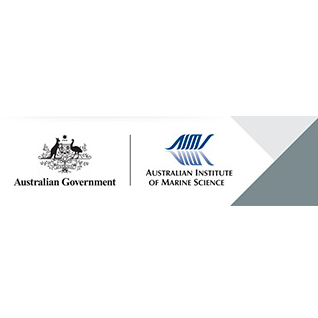Brief description
Crown-of-thorns starfish (COTS) larvae, from the mass rearing facility at the Australian Institute of Marine Science, were sorted and 600-800 late bipinnaria and early and late brachiolaria stage larvae were placed in 250 ml bottles filled with filtered seawater (< 150 larvae per bottle) and held without food. After 24 hours, actively swimming larvae in the top quarter of each bottle were selected for experiments. Seawater obtained from the rearing facility was filtered through 0.45 µm Millipore filters just before use. Experiments were run at 28°C under dim light.Six types of fluorescence-labelled cells (FLC) were prepared: three cultured algal species (Phaeodactylum tricornutum, Dunaliella tertiolecta and Tetraselmis sp); two cultured cyanobacteria species (Strain ACMM326, from the culture collection of the Sir George Fisher Centre, James Cook University and an unidentified strain); and natural bacteria. These cells were heat-killed and stained with the fluorochrome DTAF (Sigma #D2281).To test the toxicity of FLC, 50 early brachiolaria stage larvae were introduced into each of ten 100 ml bottles (five bottles per treatment), which were filled with a labelled or a living (control) cell suspension of Phaeodactylum tricornutum at about 1000 cells/ml. These bottles were placed on a cell shaker (30 shakes/min) to keep cells in suspension and incubated at 28°C under an 8 h light-16 h dark cycle. The larvae were allowed to feed for 2 days and their survival and development was recorded.To determine the gut filling rate, 15 larvae at the early brachiolaria stage, which had been starved for 24 hrs, were introduced into each of 21 scintillation vials (3 vials per treatment) with 20 ml of filtered seawater and 200 µl of a labelled Phaeodactylum tricornutum suspension. Individual vials were incubated for one of 7 time periods ranging between 2 to 30 min. At the end of the incubation period, 1 ml of a 10% buffered glutaraldehyde solution was added to the vials and the preserved samples were refrigerated for later FLC counting. Preserved larvae were gently washed with filtered seawater and a small amount of water with larvae was then filtered onto 0.45 µm Millipore filters stained with Irgalan black. Filters with larvae were mounted on glass slides, using a Zeiss immersion oil (#58884) and the larvae were examined under a Zeiss epifluorescence microscope equipped with a blue excitation filter set (#487909). The number of FLC in the gut was counted for 10 larvae from each vial.To determine if larvae could discriminate between FLC and living cells, larvae at the late bipinnaria and early and late brachiolaria stages were allowed to feed on mixtures of FLC and living cells of the algae Phaeodactylum tricornutum, Dunaliella tertiolecta, and Tetraselmis sp. and two species of cultured cyanobacteria at various proportions for 5 to 10 min. FLC and living cells in the gut were counted immediately after experiments. FLC uptake was determined for larvae at the late bipinnaria and early and late brachiolaria stages. Fifteen larvae were introduced into each experimental vial with 20 ml of filtered seawater, to which 80-2000 µl of FLC suspension was added after about 2 hours. The concentration range of FLC was 0.55-5.37 X 10^3 cells/ml for Phaeodactylum tricornutum, 0.12-7.46 X 10^3 cells/ml for Dunaliella tertiolecta, 0.31-1.27 X 10^4 cells/ml for cyanobacteria ACMM326, 0.43-10.90 X 10^4 cells/ml for unidentified cyanobacteria, and 0.78- 3.92 X 10^5 cells/ml natural bacteria. Tetraselmis sp. was not used as larvae ingested FLC selectively over living cells of Tetraselmis sp.. The incubation period was between 3 and 10 minutes, depending on the type and concentration of FLC. Samples obtained were preserved and processed in the same manner as for determining gut filling rates.This study was undertaken to test the feasibility of the fluorescence-labeled cell (FLC) technique for determining the feeding rate of crown-of-thorns starfish (COTS) larvae on ultraplankton and to examine whether COTS larvae ingest FLC at similar rates to living cells. The second objective was to use the FLC technique to determine the feeding rate of COTS larvae on bacteria and other ultraplankton.
Lineage
Maintenance and Update Frequency: notPlannedNotes
CreditAyukai, Tenshi, Dr (Principal Investigator)
Modified: 13 03 2024
text: westlimit=147.055552; southlimit=-19.267766; eastlimit=147.055552; northlimit=-19.267766
Ingestion of ultraplankton by the planktonic larvae of the crown-of-thorns starfish Acanthaster planci: Ayukai T (1994) Ingestion of ultraplankton by the planktonic larvae of the crown-of-thorns starfish Acanthaster planci. Biological Bulletin. 186: 90-101.
local : articleId=2740
Map
uri :
https://data.aims.gov.au/mestmapkml/788398e1-85ff-484f-9566-645b965aa22c.kml![]()
- global : 788398e1-85ff-484f-9566-645b965aa22c


